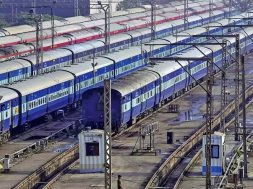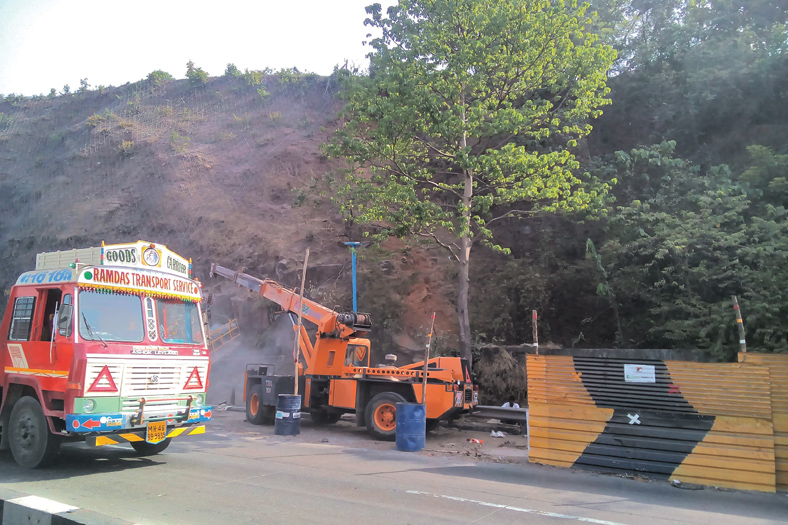Elevator market to escalate higher
The prospect for the future of elevator market looks bright
India is moving faster, rising higher and developing better. With young working population and a huge base of high-income middle-class households, the development of residential sector in the country has been steadily drifting toward the installation of high-quality elevators. Even the growing mall culture has further contributed to the elevator and escalator demand.
No wonder that elevators and escalators market in India has grown at a remarkable rate of 10.3 per cent over the period FY’2007- FY’2013.
India against ChinaIt’s not a secret that India is one of the most interesting markets for the elevator industry. India is the second largest market after China, for elevators and escalators in the world. Consider what Marcello Personeni, Marketing Manager, Sematic Group, says, “India’s new installation units per year are second only to China (50,000 vs 285,000 in 2010). The demand for elevators and services in India is forecast to grow double digit per year to $3.6 billion in 2015, making it the fastest growing market in the elevator world.”
Sebi Joseph, Managing Director, OTIS Elevators, points out the same. He says, “As of 2014, India is the second largest market in the world, with a potential of around 47,000 units as compared to China’s 400,000 units per annum. By 2017, India is estimated to have around 70,000 units.”
Junichi Kyushima, Managing Director, Toshiba Elevator and Building Systems Corp. is also very confident about the industry because of India’s growing GDP. He explains, “With the country’s GDP growing at about 8 per cent per annum, the demand for elevators and escalators is growing steadily at an about CAGR of 10-12 per cent. Buyers and end users both are becoming brand conscious and recognising the need for high-quality, safe vertical transportation systems, especially in the high-rise segment.”
Changing trendsThe role of elevators has become more of a priority with taller buildings. In the past decade, there has been a significant shift in the industry — be it customers’ requirements, technologies, or the industry itself. With these shifts, the elevator market has witnessed some new trends.
Mr Kyushima observed vertical transportation business in India has experienced an acute change in terms of technology used in it. “High-speed elevators, gearless motors, compact machine room or machine room less design, destination control systems and energy regeneration are few significant features that have transformed the way the elevator industry is now perceived. Out of the total elevator market, residential segment constitutes around 80 per cent of the demand. The ever-growing number of infrastructure projects like metros, airports, and monorails are constantly adding to the sale of total elevator units in India every year.”
According to Mr Joseph, “The industry has given birth to a growing breed of professionals — the vertical transportation consultants who often liaise between developers and manufacturers, ensuring that the best solution is arrived at, fulfilling the best interests of the customers. The industry has also expanded, with the entrance of many new players offering different levels of technologies. Faster speed elevators are now a norm, and technologies with environmental features and offering greater efficiencies are gaining relevance.”
With the introduction of higher safety and quality standards, the Indian elevator market is steadily improving its performances. Also, an ever-increasing awareness and continuing professional development of the people working in the industry, the segment is escalating higher. “The market is becoming more and more mature and focusing more on quality and safety,” explains Mr Personeni. “This is the trend and the challenges that we are seeing as the most relevant today and the strategic keys for the future growth of our industry.”
Technology innovationInnovating technology has become the top priority today; everyone wants the best in technology. With rapid urbanisation and increasing infrastructural demands, elevators have become an essential part of modern buildings. Technological innovations and safety features are some of the factors driving its growth.
Talking about their newly launched elevators Mr Joseph says, “Otis recently introduced a new elevator from the Gen2 range titled ‘Switch’. The Gen2 Switch is easy to install, single-phase, battery operated, elevator system that will be a boon to parts of India which suffer from frequent power cuts.
Under normal running mode, the single-phase power supply charges a pack of batteries, which in turn supplies power to the elevator motor. So in the event of a power failure, the battery pack continues to operate the elevator up to a 100 stops, eliminating the inconveniences of a power outage. It’s also simple to install as it uses 230 V single-phase power supply instead of conventional three-phase 400 V power supply, thus making it plug and go.”Mr Personeni seems little bit doubtful about the safety aspects of elevators. He says, “Even if elevators are among the safest forms of transportation, we still experience too many accidents due to lack of safety devices or improper installation and maintenance. Elevator component producers must be active in this sense and underline the values and importance of safety devices adequately. For an elevator door manufacturer, as Sematic, this means, for example, communicate how important is the use of fire-rated doors.”
Mr Kyushima says, “Our elevators are equipped with numerous safety features like automatic rescue device, power failure emergency operation, 3D infrared light curtains, over-speed protection, automatic landing to the nearest floor in case of system failure etc. Toshiba elevator has established field-services training centre at Fuchu Factory in Japan. This facility is a large educational facility where specialised field technicians are trained in the latest technologies to deliver safer, comfortable elevators globally.”
He further adds “All our elevators and escalators come with energy conscious features like permanent magnet synchronous gearless motor, variable voltage variable frequency drives for main motor, door motor and power regeneration feature.”
ChallengesEven though growing at a rapid speed, Indian elevator market has its own share of challenges. Changes in demands of new trends and technology can sometimes pose as hurdles to the growing market.
Mr Joseph explains, “Availability of trained manpower is a challenge being faced by the elevator and escalator market. With an increasing need for deployment of elevators and escalators to meet the growing demand in the real estate sector, the industry is facing an acute shortage of skilled manpower that can install and service elevators. Identifying the right candidates and systematically providing them with training is the key to success. The solution may lie in partnering with government skill-development institutions and liaising with Industrial Training Institutes (ITI) across the country.”
According to Mr Kyushima, keeping up with the rapidly changing needs of vertical transportation in the country and offering environmentally sustainable elevator and escalator products are the biggest challenge. He explains, “Competitively priced energy-efficient products need to be consistently provided in this market. We are approaching the Indian market as a total solution provider wherein Toshiba as a group will provide “one-stop solution” for all major energy-saving requirements of a building and strike a balance among environmental considerations and comfortable living.
The three main segments under this approach are energy, data storage and healthcare.”Mr Personeni also advices, “If we focus on safety and quality, in all the aspects of our work, from product manufacturing to employee training, we will be ready to face any challenge that vertical transportation will pose to us in the future. In Sematic, the commitment for designing and manufacturing increasingly reliable, safe and efficient technological solutions, through the continuous pursuit of excellence in production processes and in product development has always been the No 1 priority.”
FutureUrbanisation is the key driver to any industry. Vertical growth and major metros has put the elevator market in India on a high-growth route. The prospect for the future of the elevator market looks bright.
Mr Joseph predicts that Indian elevator industry is positioned to grow tremendously in the coming years. He explains, “As per a 2010 McKinsey report on India’s urbanisation, cities will house 590 million people or 40 per cent of the population by 2030. An increase in the number of infrastructure, commercial and residential projects is expected in the coming years due to rapid urbanisation rates. As buildings become taller and residences are made more luxurious, the premium end of the market will expand rapidly. Products in this segment will be faster speed customised to the requirements of the Indian customers.”
No doubt, Indian elevator industry will be the most happening in the world for many decades. It doesn’t mean that the industry won’t face any challenges. The industry will face the same challenges as India is facing as a nation: making the rapid and demographic growth sustainable by improving the quality of life of the population.
16
Cookie Consent
We use cookies to personalize your experience. By continuing to visit this website you agree to our Terms & Conditions, Privacy Policy and Cookie Policy.









